Training Areas
TRAINING FORMATIONS
Formations used for physical training may also be used for combatives training (FM 21-20). If the extended rectangular formation is used, the first and third ranks should face the second and fourth ranks so that each soldier is directly across him a partner. A large, grassy, outdoor area free of obstructions is suitable for training. Each pair of soldiers should have an 8-foot square training space. When practicing throws or disarming techniques, soldiers need twice the normal interval between ranks. Instructors also pair soldiers according to height and weight.
MATTED ROOM
Because inclement weather can be a training distracter, the best training area is an indoor, climate-controlled facility with both padded floor and walls. Mats should be sufficiently firm to allow free movement, but provide enough impact absorption to allow safe throws and takedowns.
PIT CONSTRUCTION
A common area for teaching hand-to-hand combat is a sawdust pit. Sawdust pits are designed to teach throws and falls safely, but are not very suitable for ground fighting. The figure below shows a training area for 200 soldiers with a sawdust pit surrounding an instructor and a demonstrator platform.
a. To construct the pit, dig out and level an area 50 meters wide, and build a retaining wall at least 24 inches high. The wall can be cinderblocks, sandbags, or dirt if other materials are not available. (To prevent injuries when using a cinderblock retaining wall, cover the wall and the top of the wall with sandbags.) Place a layer of plastic sheeting on the ground to prevent the growth of grass and weeds, and place a sand base up to 12 inches deep on top of the plastic. Then, place a layer of sawdust about 6 inches deep on top of the sand.
b. Build a 14-foot square demonstration area in the center of the pit with the same type of retaining wall described in paragraph a. This area should be large enough for two demonstrators and the primary instructor.
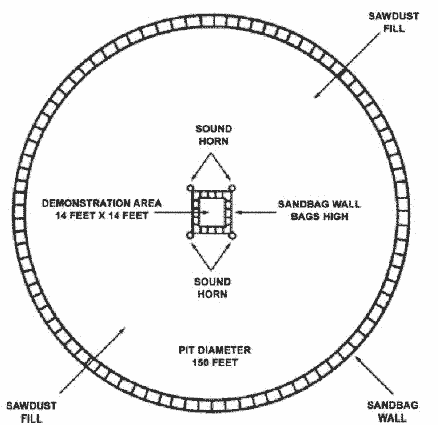
Combatives Training Pit
BAYONET ASSAULT COURSE
The bayonet assault course provides the commander a unique training opportunity by allowing soldiers to employ rifle-bayonet fighting skills under simulated combat conditions. The course can be built and negotiated so that demands placed on the soldiers’ abilities and on their endurance approach those experienced under combat conditions. Realistic sights and sounds of battle-fire, smoke, confusion, and pyrotechnics-can also be created to enhance realism. The training objectives of the bayonet assault course include:
a. Safety. The safety of the soldiers should be the primary concern of the instructor and his assistants. The best safety aids are constant control and supervision. In addition, instructors should brief soldiers at the beginning of each class on the requirements for safety during rifle-bayonet training. Instructors use the following safety measures:
(1) Bayonets must be fixed and unfixed only on command.
(2) Rifles should be grounded near the targets when the soldiers are ordered to move to the instructor’s platform for explanations or demonstrations.
(3) A level surface that does not become slippery when wet should be provided for the training area.
(4) Left-handed soldiers should be positioned so they are opposite another left-handed soldier when working against the targets. This type of arrangement prevents possible injury when executing a series of movements.
(5) When using the M16 rifle against a target, the force of contact during the thrust movement may drive the hand gripping the small of the stock into the forward assist assembly (on the right-hand side of the weapon near the stock). To prevent injury to the hand, the soldier must maintain a firm grip on the small of the stock. Gloves should be worn as part of the training uniform when weather dictates.
b. Layout. The 300-meter-long course consists of a series of targets to attack, and obstacles to negotiate. Lay it out over natural terrain, preferably rough and wooded areas. Include natural obstacles such as streams, ravines, ridges, and thick vegetation. Build artificial obstacles such as entanglements, fences, log walls, hurdles, and horizontal ladders (Figure Below).
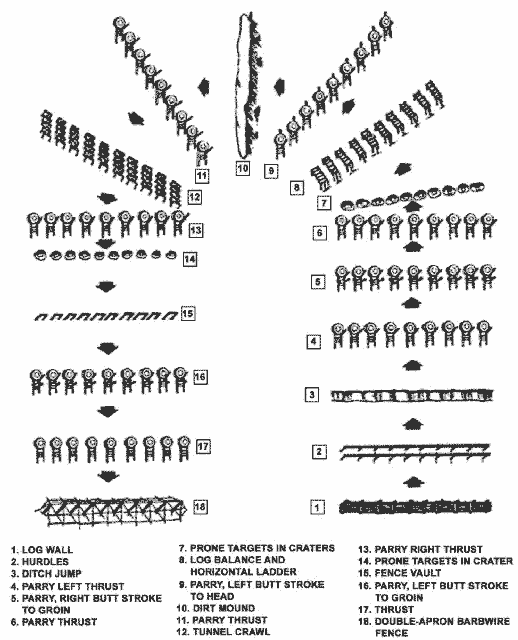
Example of nine-lane, 300-meter bayonet assault course.
c. Targets. Use a variety of targets to provide experience in different attacks. The local Training and Support Center (TSC) can build the targets. Targets composed of old tires are appropriate as well as the Ivan-type targets used by range control-that is, the E-type silhouette, three-dimensional personnel target (large), FSN 6920-01-164-9625 or the F-type silhouette, three-dimensional personnel target (small), FSN 6920-00-T33-8777.
Targets should be durable but should not damage weapons. Place a sign near each target to indicate the type of attack to be used.
d. Usage. An example of how to conduct the bayonet assault course is as follows:
(1) Task. Negotiate the bayonet assault course.
(2) Conditions. Given nine lanes on a 300-meter bayonet assault course over irregular terrain with four types of targets: thrust; parry thrust target; parry, butt stroke to the groin target; and parry, butt stroke to head target (Figure below). The targets are marked with a sign to indicate the required attack. Given seven types of obstacles as shown in Figures 2-4 through 2-10. Given a soldier in battle dress uniform with load-carrying equipment and a rifle with a fixed bayonet.
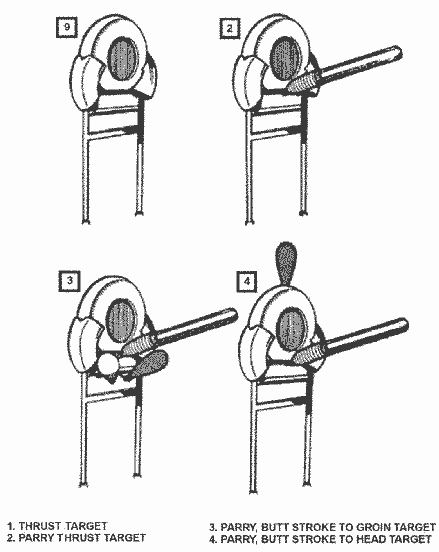
Types of Targets
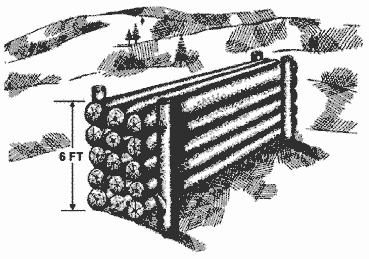
Log Wall
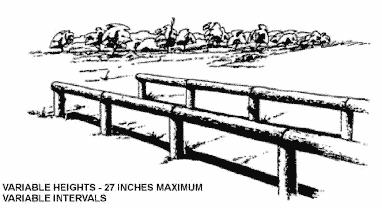
Hurdles
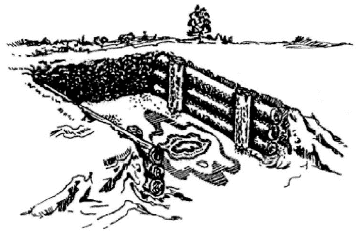
Ditch Jump
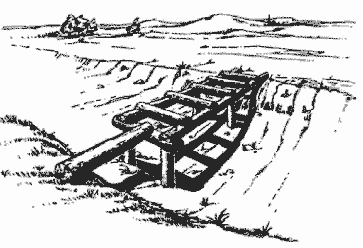
Log Balance and Horizontal Ladder
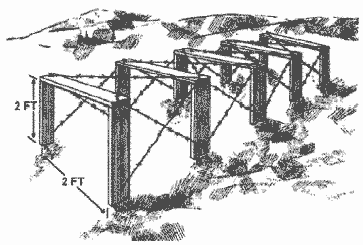
Tunnel Crawl
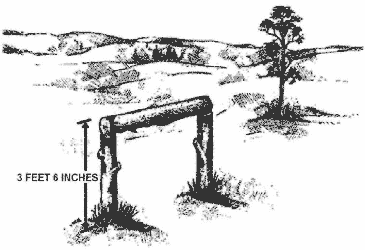
Fence Vault
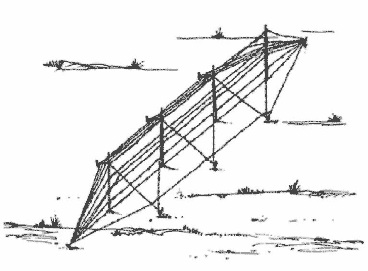
Double-apron Barbed Wire Fence
(3) Standards. The course must be successfully negotiated by all soldiers in the class with each soldier obtaining kills on 75 percent of the total targets in his lane. The course must be negotiated in 5 minutes or less (about 30 seconds for each 50 meters and time to attack and negotiate obstacles).
WARNING To avoid injury, instructors ensure that the proper interval is constantly maintained.